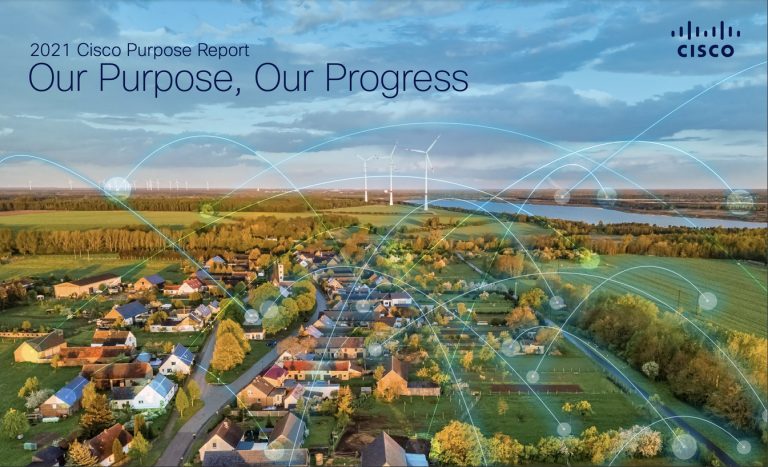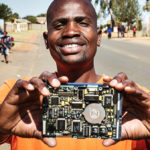The following is an excerpt from the 2021 Cisco Purpose Report, published on December 13, 2021.
Circular design means designing products and systems that enable reuse, minimize environmental impact, drive innovation, and realize value for our stakeholders. After launching our Circular Design Principles in fiscal 2020, we prioritized training the design community and further integrating the Principles into standard design tools and requirements. We launched an interactive, gamified training course where learners make design decisions to “build” Cisco products, learning about the Circular Design Principles as they go, and reached a completion rate of 93 percent across prioritized supply chain and engineering teams.
In addition to the Circular Design Principles training, we launched a circular design evaluation methodology and tool that will help us track progress toward our goal that 100 percent of new Cisco products and packaging incorporate the Design Principles by 2025. The evaluation methodology was developed with the help of a cross-functional team of leaders from our product design, manufacturing, and service organizations. We tested these new tools by evaluating to what extent 15 products and 10 packaging designs at different stages of new product introduction (NPI) from across our product portfolio incorporated our Circular Design Principles. Of those, nine products and three packaging designs met the defined threshold for integration. The pilot included product families that have been collaborating closely with the Circular Economy team on integrating the Principles. Therefore, the scores are higher than what we expect to see next year with an expanded scope. In the coming year, we will continue to integrate the evaluation tool into our product development processes and expand scoring to additional product families.
As we continue to incorporate Cisco’s Circular Design Principles into all NPI product and packaging design, we are also identifying new opportunities to reduce unwanted or redundant items in shipments and reduce plastic waste. We have expanded our power cord opt out model to additional products and in fiscal 2022 we’ll evaluate providing customers with a more standardized option to opt-out of accessory kits when placing orders.
In fiscal 2021, Cisco met the 2025 goal to reduce virgin plastic by 20 percent and we closed out the goal. We reduced virgin plastics by 38 percent compared to our baseline due to an increase in the use of recycled plastic and COVID-19 impacts. We remain focused on reducing use of virgin plastic, facilitating reuse of materials and increasing the use of recycled plastic by further embedding Cisco’s Circular Design Principles throughout the business. This includes efforts like eliminating plastic bags for items such as external power supply units and power and accessory cables. We are also considering potential future goals that align with our focus on reducing the use of virgin materials and increasing the use of recycled plastic.
Circular thinking in new UCS-X servers
Circular design is not a new concept to Cisco’s Unified Computing System (UCS) team. For over a decade, UCS servers have been engineered to be quickly assembled and disassembled using common tools. Built with modular, easily removable components, UCS products are optimized for repair, reuse, and eventually recycling. The team has also eliminated wet paint from many of its products and offers multipack shipping for smaller units to eliminate excessive packaging. The latest generation of UCS-X products takes it a step further, featuring streamlined fastening to speed up the disassembly process, plastic parts made of post-consumer recycled resin, and a 62 percent reduction in powder coat usage compared to the prior generation. Customers can opt out of product accessories they don’t need, and the product ships with recycled foam packaging.
Optimizing product packaging
We are reducing the environmental footprint of our packaging and making progress toward our goals by improving packaging efficiency, minimizing single-use plastics and foam, reducing unwanted or redundant items in shipments, and using readily recyclable materials. In fiscal 2021, we drove significant collaboration between cross-functional teams to identify a number of new packaging solutions and process efficiencies. These changes led to cost savings, GHG emissions savings, and material waste reduction without compromising product protection. For example, we redesigned regular slotted container boxes used for the Catalyst C9600 Series Line Cards to use a full overlap design. This packaging is expected to eliminate up to 9000 pounds of corrugate per year, contributing to the 336,000 pounds total of corrugate eliminated in our packaging shipped in fiscal 2021.
To learn more about the progress we’re making to power a more inclusive future through CSR, visit our Cisco ESG Reporting Hub, where you can read our 2021 Cisco Purpose Report.



Great to see progress in this vital area!
Minimizing packaging is a great initiative to help the environment. Great job Cisco!
Cisco turning in one of my respected companies, Good jon Cisco keep up always!!!